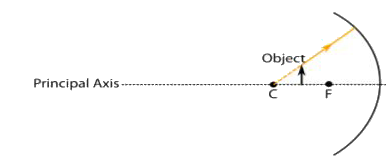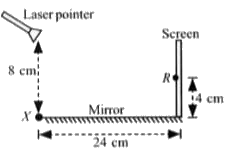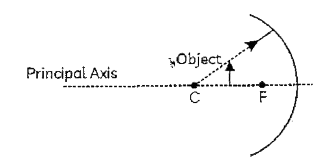A _____ is fixed at focal point of the objective, which reflects the collected rays to eyepice.
small convex mirror
small concave mirror
small convex lens
large cocave lens
The correct Answer is:A
Step by step video, text & image solution for A _____ is fixed at focal point of the objective, which reflects the collected rays to eyepice. by Physics experts to help you in doubts & scoring excellent marks in Class 11 exams.
Topper's Solved these Questions
- BOOK - TARGET PUBLICATIONCHAPTER - RAY OPTICSEXERCISE - CRITICALTHINKING34videos
RAY OPTICS
- BOOK - TARGET PUBLICATIONCHAPTER - RAY OPTICSEXERCISE - COMPETITIVE THINKING60videos
RAY OPTICS
- BOOK - TARGET PUBLICATIONCHAPTER - MEASUREMENTSEXERCISE - EVALUATION TEST17videos
MEASUREMENTS
- BOOK - TARGET PUBLICATIONCHAPTER - REFRACTION OF LIGHT EXERCISE - EVALUATION TEST12videos
REFRACTION OF LIGHT
Similar Questions
The eyepice of an astronomicasl telescope has a focasl length of 10 cm. The telescope is focussed for normal vision of distant objects when the tube length is 1.0 m. find the focal length of the bjective and the magnifying power of the telescope.
View SolutionA light ray emerging from the point source placed at P(1,3) is reflected at a point Q in the axis of x. If the reflected ray passes through the point R(6,7), then the abscissa of Q is:
View Solution
Knowledge Check
- Question 1 - Select One
Consider the following statements:
1. The focal length of the objective of a microscope is
less than the focal length of the eyepice.
2. The minimum distance between an object and its real
image formed by a convex lens of focal length f is eqyal
to f.Aa 1 onlyBb 2 onlyCc Both 1 and 2Dd Neither 1 nor 2 - Question 2 - Select One
The distance between the second focal point of the objective (f0) and first focal point of the eyepiece i.e. fe is called …A… .
Here,A refers toAtube lengthBfocal lengthCimage distanceDradius of curvature - Question 3 - Select One
A simple telescope, consisting of an objective of focal length 60cm and a single eye lens of focal length 5cm is focused on a distant object in such a way that parallel rays emerge form the eye lens. If the object makes an angle of 2∘ at the objective, the angular width if the image is
A10∘B24∘C50∘D60∘
A telescope consisting of an objective of focal length 60 cm and a single–lens eyepiece of focal length 5 cm is focussed at a distant object in such a way that parallel rays emerge from the eye piece. If the object subtends an angle of 2∘ at the objective, then find the angular width of the image.
View SolutionSuppose a circle C of radius √2 touches the Y-axis at the origin (0,0). A ray of light L, parallel to the X-axis, reflects on a point P on the circumference of C, and after reflection, the reflected ray L' becomes parallel to the Y-axis. Find the distance between the ray L and the X-axis.
View Solution
While looking at the above diagram, Nalini concluded the following-
i. the image of the object will be a virtual one.
ii. the reflected ray will travel along the same path as the incident ray but in opposite direction.
iii. the image of the object will be inverted.
iv. this is a concave mirror and hence the focal length will be negative.
Which one of the above statements are correct?View SolutionThe ray from a laser pointer hits a plane mirror and the reflected ray strikes a screen. How far away from point X should the ray strike the mirror to cause the reflected ray to hit point R?
 View Solution
View Solution
While-looking at the above diagram, Nalini concluded the following:
(I) the image of the object will be a virtual one.
(II) the reflected.ray will travel along the same path as the incident ray but in opposite direction.
(lII) the image of the object will be inverted.
(IV) this is a concave mirror and hence the focal length will be negative. Which one of the above statements are correct?View Solution

